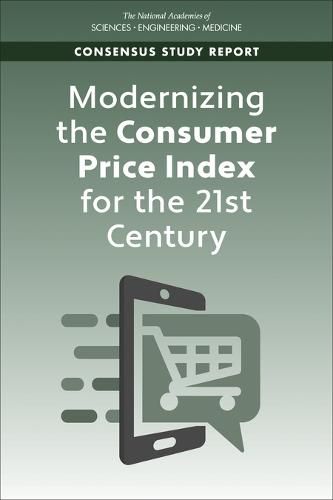Readings Newsletter
Become a Readings Member to make your shopping experience even easier.
Sign in or sign up for free!
You’re not far away from qualifying for FREE standard shipping within Australia
You’ve qualified for FREE standard shipping within Australia
The cart is loading…






The Consumer Price Index (CPI), produced by the Bureau of Labor Statistics (BLS), is the most widely used measure of inflation in the U.S. It is used to determine cost-of-living allowances and, among many other important private- and public-sector applications, influences monetary policy. The CPI has traditionally relied on field-generated data, such as prices observed in person at grocery stores or retailers. However, as these data have become more challenging and expensive to collect in a way that reflects an increasingly dynamic marketplace, statistical agencies and researchers have begun turning to opportunities created by the vast digital sources of consumer price data that have emerged. The enormous economic disruption of the COVID-19 pandemic, including major shifts in consumers' shopping patterns, presents a perfect case study for the need to rapidly employ new data sources for the CPI.
Modernizing the Consumer Price Index presents guidance to BLS as the agency embarks on a strategy of accelerating and enhancing the use of scanner, web-scraped, and digital data directly from retailers in compiling the CPI. The report also recommends strategies for BLS to more accurately estimate the composition of households' expenditures - or market basket shares - by updating this information more frequently and using innovative survey techniques and alternative data sources where possible. The report provides targeted guidance for integrating new data sources to improve the CPI's estimation of changes in the prices of housing and medical care, two consumer expenditure categories that are traditionally difficult to measure. Because of the urgency of issues related to income and wealth inequality, the report also recommends that BLS identify data sources that would allow it to estimate price indexes defined by income quintile or decile.
Table of Contents
Front Matter Summary 1 Introduction 2 The Potential of Alternative Data Sources to Modernize Elementary Indexes 3 Higher-Level Aggregation and Shifting Consumer Behavior 4 Modernizing Difficult-to-Measure Expenditure Categories: Housing/Shelter 5 Modernizing Difficult-to-Measure Expenditure Categories: Medical Care 6 Supplemental Subgroup Price Indexes 7 Organizational Considerations and Overarching Guidance References Appendix: Biographical Sketches of Panel Members Committee on National Statistics
$9.00 standard shipping within Australia
FREE standard shipping within Australia for orders over $100.00
Express & International shipping calculated at checkout
Stock availability can be subject to change without notice. We recommend calling the shop or contacting our online team to check availability of low stock items. Please see our Shopping Online page for more details.
The Consumer Price Index (CPI), produced by the Bureau of Labor Statistics (BLS), is the most widely used measure of inflation in the U.S. It is used to determine cost-of-living allowances and, among many other important private- and public-sector applications, influences monetary policy. The CPI has traditionally relied on field-generated data, such as prices observed in person at grocery stores or retailers. However, as these data have become more challenging and expensive to collect in a way that reflects an increasingly dynamic marketplace, statistical agencies and researchers have begun turning to opportunities created by the vast digital sources of consumer price data that have emerged. The enormous economic disruption of the COVID-19 pandemic, including major shifts in consumers' shopping patterns, presents a perfect case study for the need to rapidly employ new data sources for the CPI.
Modernizing the Consumer Price Index presents guidance to BLS as the agency embarks on a strategy of accelerating and enhancing the use of scanner, web-scraped, and digital data directly from retailers in compiling the CPI. The report also recommends strategies for BLS to more accurately estimate the composition of households' expenditures - or market basket shares - by updating this information more frequently and using innovative survey techniques and alternative data sources where possible. The report provides targeted guidance for integrating new data sources to improve the CPI's estimation of changes in the prices of housing and medical care, two consumer expenditure categories that are traditionally difficult to measure. Because of the urgency of issues related to income and wealth inequality, the report also recommends that BLS identify data sources that would allow it to estimate price indexes defined by income quintile or decile.
Table of Contents
Front Matter Summary 1 Introduction 2 The Potential of Alternative Data Sources to Modernize Elementary Indexes 3 Higher-Level Aggregation and Shifting Consumer Behavior 4 Modernizing Difficult-to-Measure Expenditure Categories: Housing/Shelter 5 Modernizing Difficult-to-Measure Expenditure Categories: Medical Care 6 Supplemental Subgroup Price Indexes 7 Organizational Considerations and Overarching Guidance References Appendix: Biographical Sketches of Panel Members Committee on National Statistics